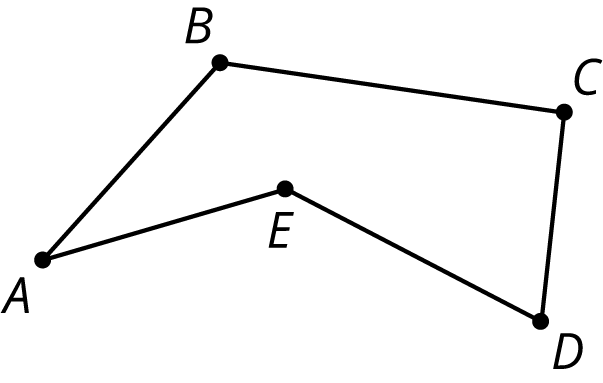Lesson 3
Making the Moves
Let's draw and describe translations, rotations, and reflections.
3.1: Notice and Wonder: The Isometric Grid
What do you notice? What do you wonder?
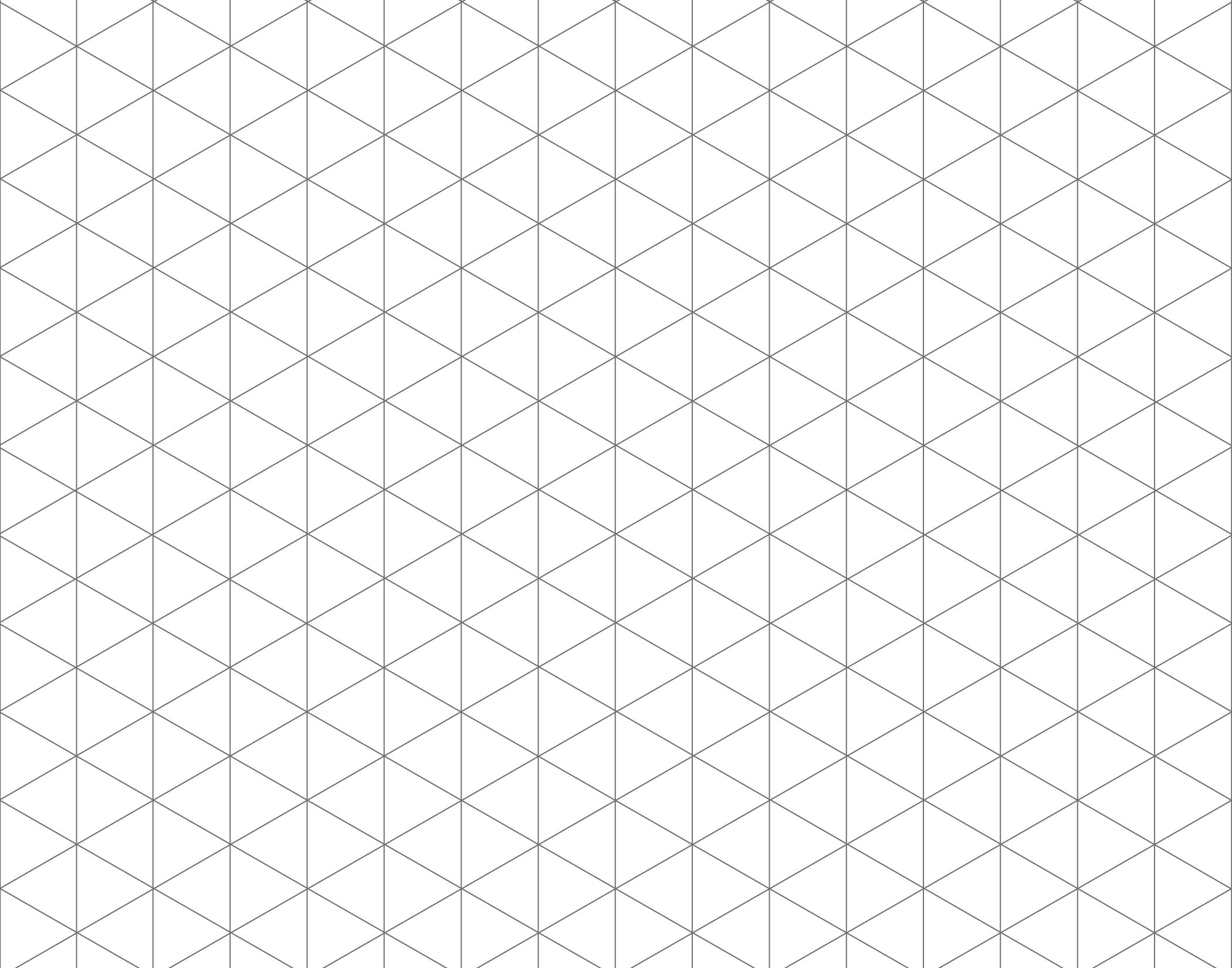
3.2: Transformation Information
Follow the directions below each statement to tell GeoGebra how you want the figure to move. It is important to notice that GeoGebra uses vectors to show translations. A vector is a quantity that has magnitude (size) and direction. It is usually represented by an arrow.
These applets are sensitive to clicks. Be sure to make one quick click, otherwise it may count a double-click.
After each example, click the reset button, and then move the slider over for the next question.
- Translate triangle \(ABC\) so that \(A\) goes to \(A’\).
- Select the Vector tool.

- Click on the original point \(A\) and then the new point \(A’\). You should see a vector.
- Select the Translate by Vector tool.

- Click on the figure to translate, and then click on the vector.
- Select the Vector tool.
-
Translate triangle \(ABC\) so that \(C\) goes to \(C’\).
- Rotate triangle \(ABC\) \(90^\circ\) counterclockwise using center \(O\).
- Select the Rotate around Point tool.

- Click on the figure to rotate, and then click on the center point.
- A dialog box will open; type the angle by which to rotate and select the direction of rotation.
- Click on ok.
- Select the Rotate around Point tool.
- Reflect triangle \(ABC\) using line \(\ell\).
- Select the Reflect about Line tool.

- Click on the figure to reflect, and then click on the line of reflection.
- Select the Reflect about Line tool.
-
Rotate quadrilateral \(ABCD\) \(60^\circ\) counterclockwise using center \(B\).
-
Rotate quadrilateral \(ABCD\) \(60^\circ\) clockwise using center \(C\).
-
Reflect quadrilateral \(ABCD\) using line \(\ell\).
-
Translate quadrilateral \(ABCD\) so that \(A\) goes to \(C\).
Try your own translations, reflections, and rotations.
- Make your own polygon to transform, and choose a transformation.
- Predict what will happen when you transform the image. Try it - were you right?
- Challenge your partner! Right click on any vectors or lines and uncheck Show Object. Can they guess what transformation you used?
Visit ggbm.at/eFeE2Veu for the applet.
3.3: A to B to C
Here are some figures on an isometric grid. Explore the transformation tools in the tool bar. (Directions are below the applet if you need them.)
-
Name a transformation that takes Figure A to Figure B. Name a transformation that takes Figure B to Figure C.
-
What is one sequence of transformations that takes Figure A to Figure C? Explain how you know.
Translate
- Select the Vector tool.

- Click on the original point and then the new point. You should see a vector.
- Select the Translate by Vector tool.

- Click on the figure to translate, and then click on the vector.
Rotate
- Select the Rotate around Point tool.

- Click on the figure to rotate, and then click on the center point.
- A dialog box will open. Type the angle by which to rotate and select the direction of rotation.
Reflect
- Select the Reflect about Line tool.

- Click on the figure to reflect, and then click on the line of reflection.
Experiment with some other ways to take Figure \(A\) to Figure \(C\). For example, can you do it with. . .
- No rotations?
- No reflections?
- No translations?
Summary
A move or combination of moves is called a transformation. When we do 1 or more moves in a row, we often call that a sequence of transformations. When a figure is on a grid, we can use the grid to describe a transformation. We use the word image to describe the figure after a transformation. To distinguish the original figure from its image, points in the image are sometimes labeled with the same letters as the original figure, but with the symbol \(’\) attached, as in \(A’\) (pronounced “A prime”) is the image of \(A\) after a transformation.
-
A translation can be described by two points. If a translation moves point \(A\) to point \(A’\), it moves the entire figure the same distance and direction as the distance and direction from \(A\) to \(A’\). The distance and direction of a translation can be shown by an arrow.
For example, here is a translation of quadrilateral \(ABCD\) that moves \(A\) to \(A’\).
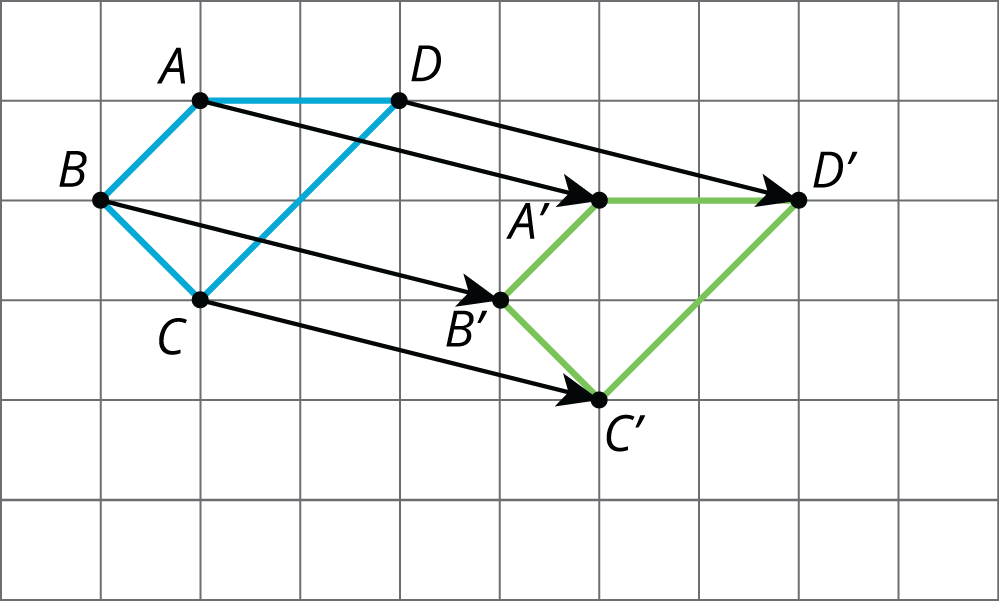
- A rotation can be described by an angle and a center. The direction of the angle can be clockwise or counterclockwise.
For example, quadrilateral \(KLMN\) is rotated 60 degrees counterclockwise using center \(P\). This type of grid is called an isometric grid. The isometric grid is made up of equilateral triangles. The angles in the triangles each measure 60 degrees, making the isometric grid convenient for showing rotations of 60 degrees.
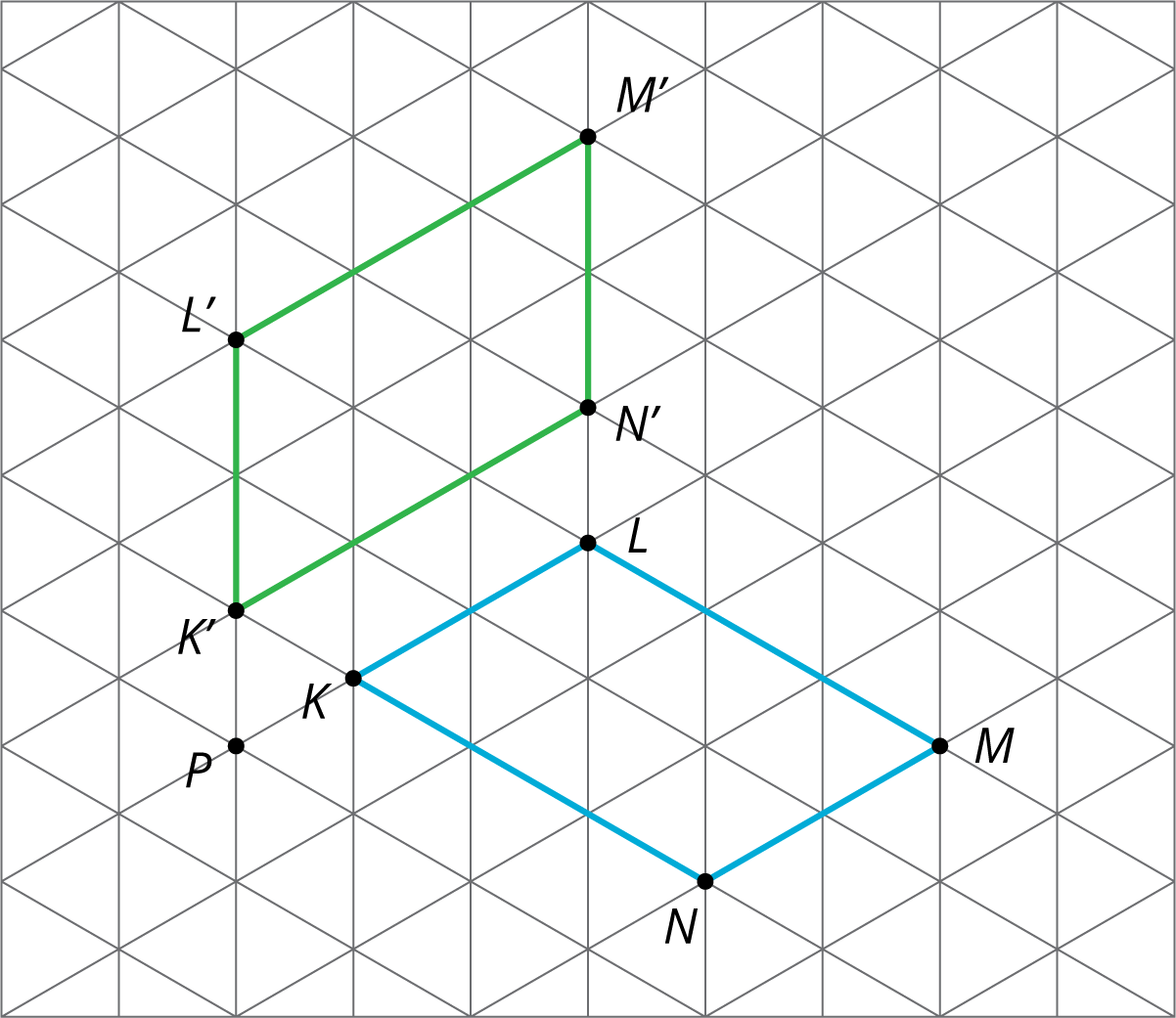
- A reflection can be described by a line of reflection (the “mirror”). Each point is reflected directly across the line so that it is just as far from the mirror line, but is on the opposite side.
For example, pentagon \(ABCDE\) is reflected across line \(m\).
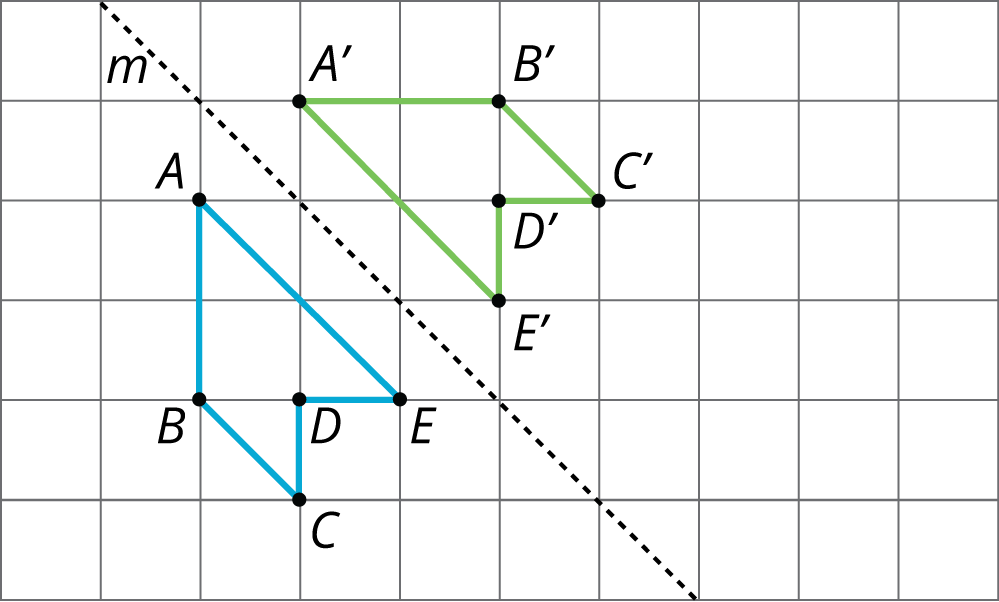
Glossary Entries
- clockwise
Clockwise means to turn in the same direction as the hands of a clock. The top turns to the right. This diagram shows Figure A turned clockwise to make Figure B.
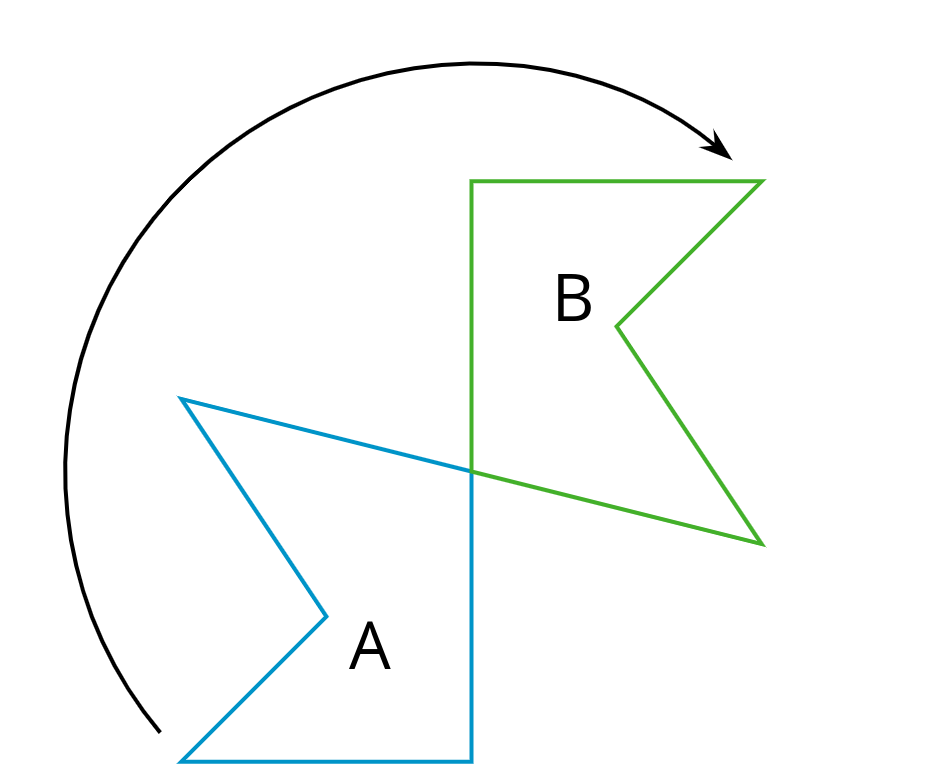
- counterclockwise
Counterclockwise means to turn opposite of the way the hands of a clock turn. The top turns to the left.
This diagram shows Figure A turned counterclockwise to make Figure B.
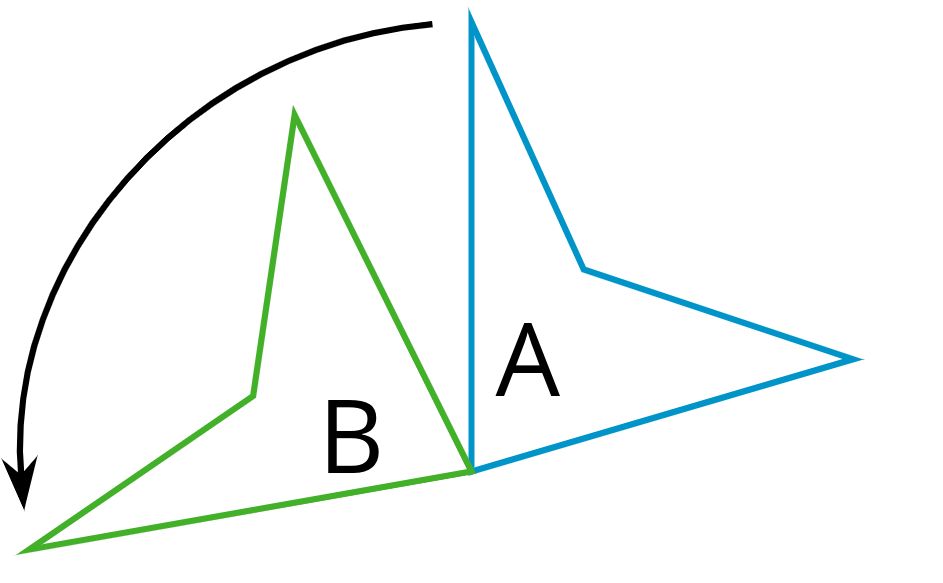
- image
An image is the result of translations, rotations, and reflections on an object. Every part of the original object moves in the same way to match up with a part of the image.
In this diagram, triangle \(ABC\) has been translated up and to the right to make triangle \(DEF\). Triangle \(DEF\) is the image of the original triangle \(ABC\).
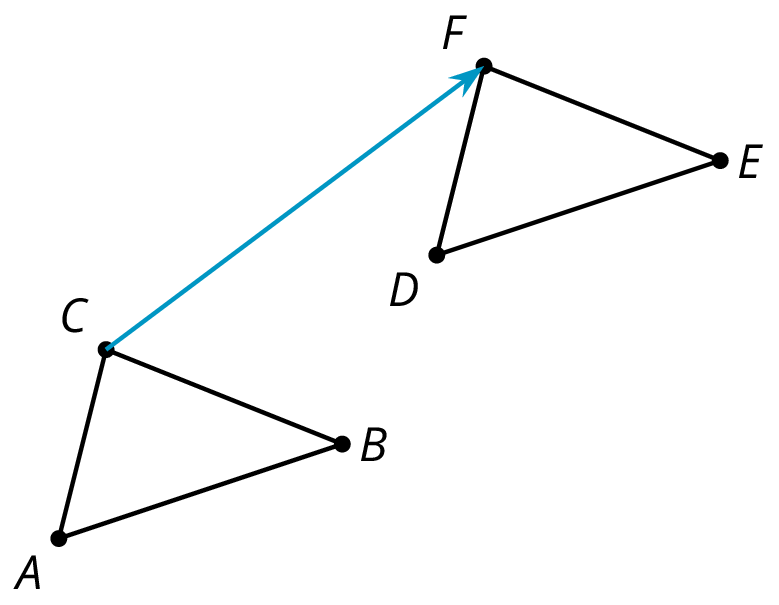
- reflection
A reflection across a line moves every point on a figure to a point directly on the opposite side of the line. The new point is the same distance from the line as it was in the original figure.
This diagram shows a reflection of A over line \(\ell\) that makes the mirror image B.

- rotation
A rotation moves every point on a figure around a center by a given angle in a specific direction.
This diagram shows Triangle A rotated around center \(O\) by 55 degrees clockwise to get Triangle B.
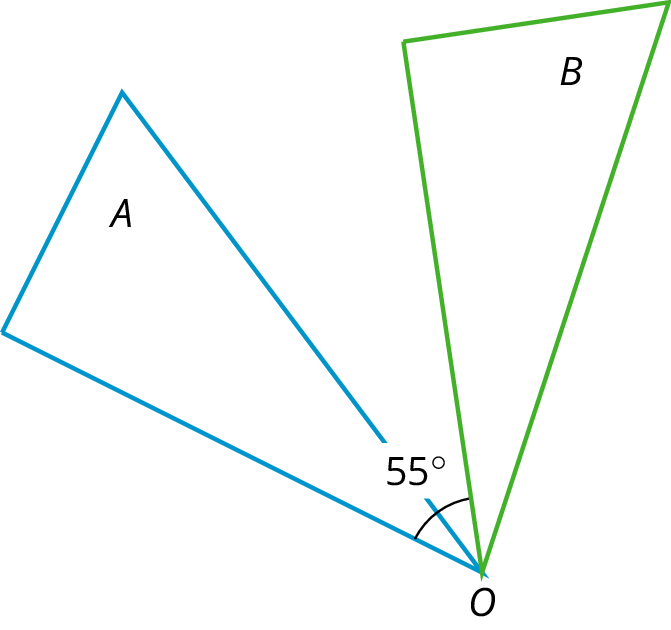
- sequence of transformations
A sequence of transformations is a set of translations, rotations, reflections, and dilations on a figure. The transformations are performed in a given order.
This diagram shows a sequence of transformations to move Figure A to Figure C.
First, A is translated to the right to make B. Next, B is reflected across line \(\ell\) to make C.
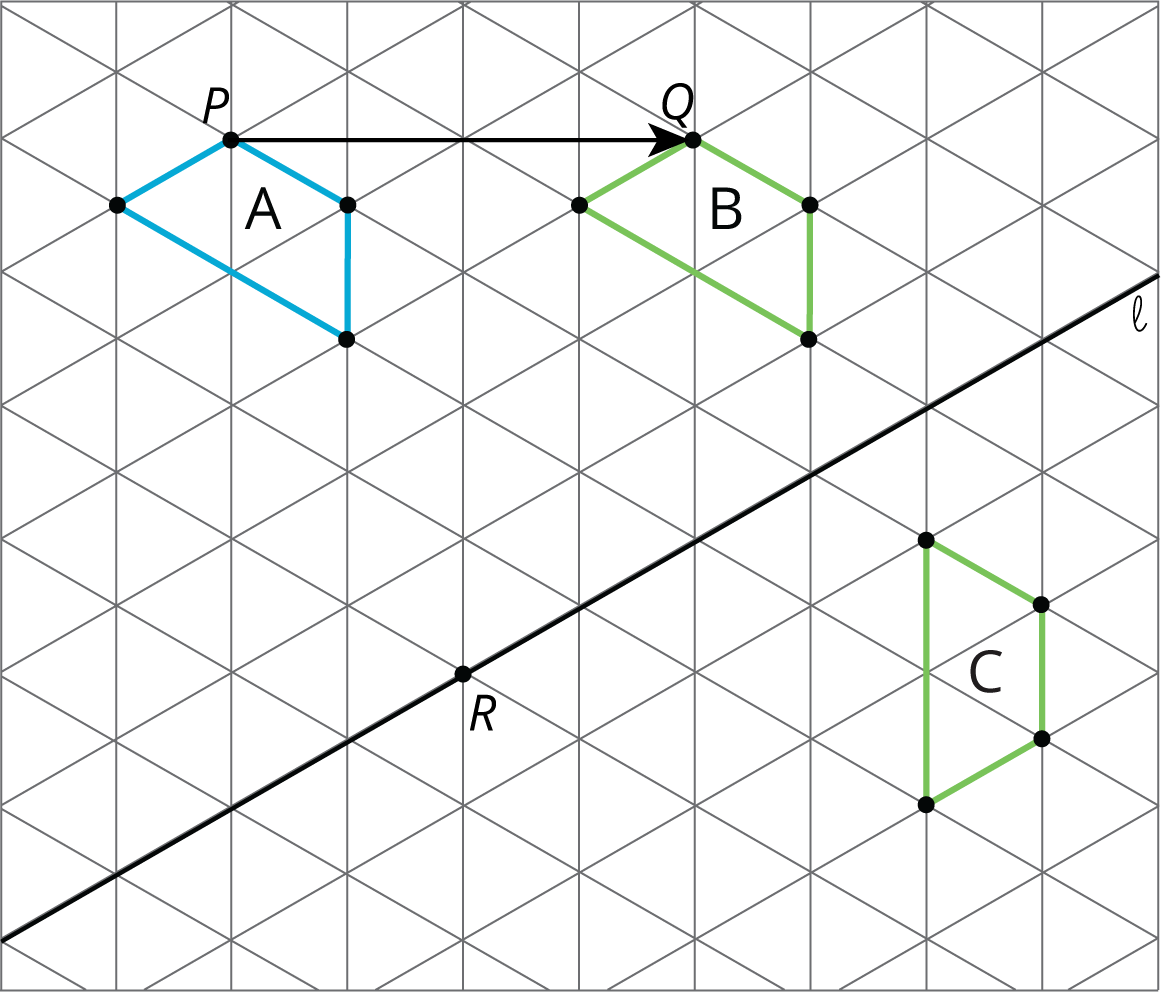
- transformation
A transformation is a translation, rotation, reflection, or dilation, or a combination of these.
- translation
A translation moves every point in a figure a given distance in a given direction.
This diagram shows a translation of Figure A to Figure B using the direction and distance given by the arrow.

- vertex
A vertex is a point where two or more edges meet. When we have more than one vertex, we call them vertices.
The vertices in this polygon are labeled \(A\), \(B\), \(C\), \(D\), and \(E\).
